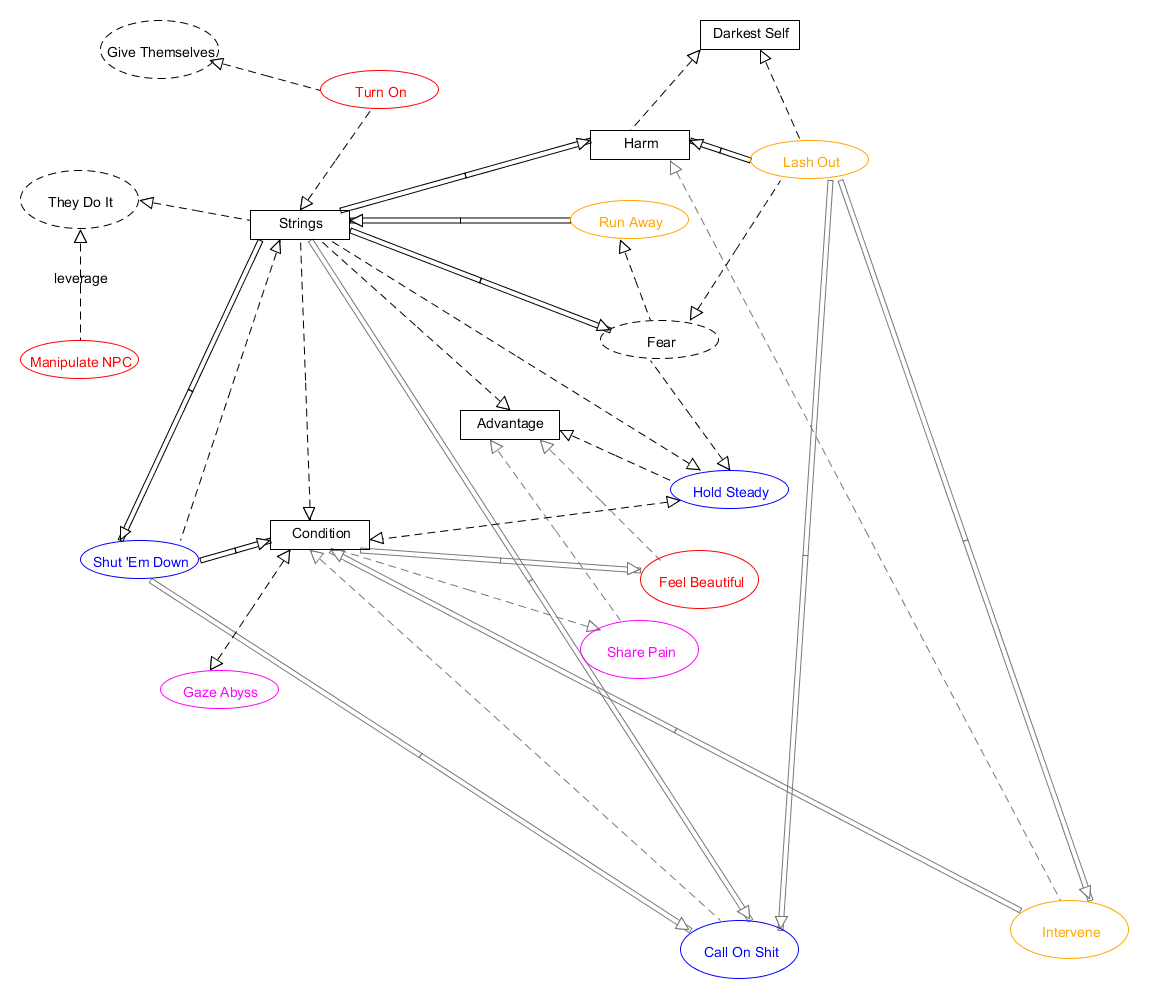Hacking AW – the purpose of moves.
Hacking AW – the purpose of moves. My brain keeps coming around to this question: what are moves for? By which I mean, why should my hack include move ‘x’? What am I trying to accomplish?
Here’s what I’ve got as a tentative list of move ‘natures’:
Arbiter moves that resolve something contentious, settling a potential disagreement over an outcome or the fiction. (Example: hack and slash)
Montage moves that skip play past something you don’t want to focus on (example: Regiment’s downtime move)
Scene-framing moves that plop you into situations with potential (example: Regiment’s engagement move). These can flip past time (like montages), but they focus on what’s next, rather than quickly resolving a bunch of time.
Opinion moves that inject ideas for genre-relevant outcomes that the participants might not think of (e.g. Go Aggro)
Moves that imply the key factors in genre-relevant situations (e.g. Regiment’s Assault move) – whether by making them mechanically relevant, or alternately implying that this is what the unstructured conversation should be about (the ‘fruitful void’)
Prompt moves that give players ideas for what their characters could do (e.g. Regiment’s Petition move), or differentiating characters with things nobody else can do (e.g. Battlebabe’s dangerous & sexy)
Moves that serve up meaningful choices (Seduce or Manipulate being one of many)
Moves can of course do several of these things (I notice that one of my favorite moves, Regiment’s Engagement move, falls into several of these categories).
(Two slightly problematic move natures pop to mind, where an interesting fictional situation is reduced to a mechanical modifier, or worse, made irrelevant by a resolution move that discounts preceding fiction, thereby discouraging it.)
If this is a useful list, then these might be useful questions:
What will participants (players, perhaps including the GM) disagree on?
What will they get bogged down on?
What won’t they think of doing?
What won’t they realize might occur?
What are the key factors in the important situations of the game?
What should participants be nudged into talking about?
What meaningful choices or trade-offs should be highlighted?


